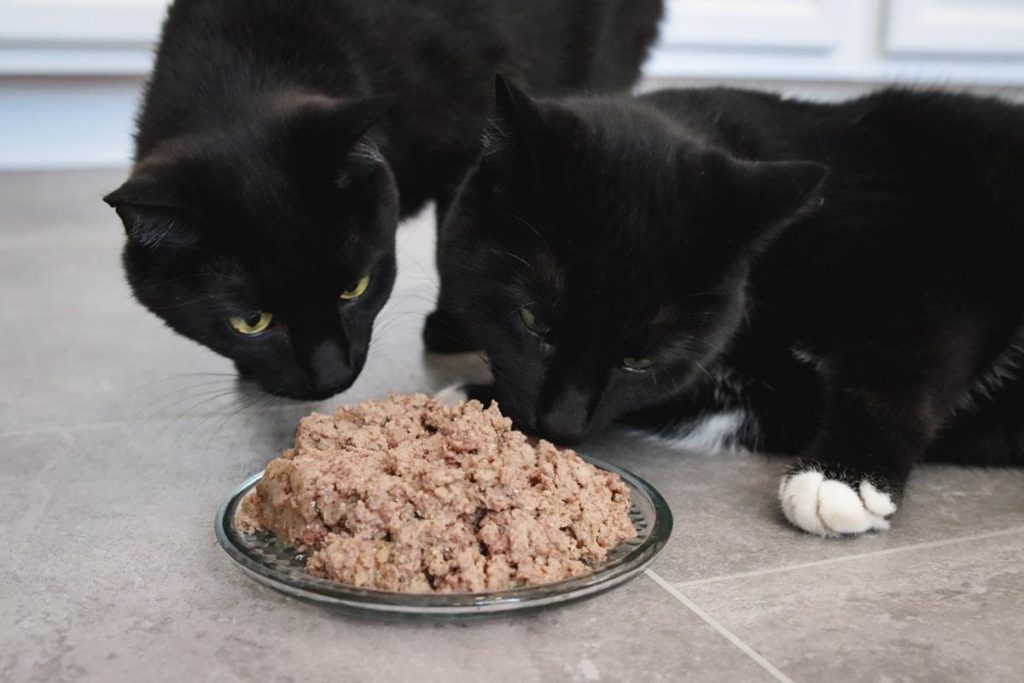Factors Affecting Feeding Behavior in Pets

Understanding the Influences on Pet Feeding Behavior
Feeding behavior in pets is a complex interplay of various factors that can significantly impact their health and well-being. Understanding these factors is crucial for pet owners looking to provide a balanced diet that their animals truly enjoy. Here are some key elements that play a role in shaping how our furry companions approach their food:
- Genetics: Pets, like humans, can inherit preferences for certain flavors and textures based on their breed. For instance, many breeds, such as Labrador Retrievers, are known for their love of food, while others, like greyhounds, may be more selective. This genetic predisposition can impact the types of food a pet may readily accept or reject.
- Age: A pet’s stage of life is critical in determining its nutritional needs. Puppies and kittens require diets rich in protein and other nutrients to support their rapid growth. Conversely, senior pets often need specialized diets that cater to their slowing metabolism and potential health concerns, such as arthritis or kidney disease. Observing how a pet’s preference evolves as it ages can give insights into necessary dietary adjustments.
- Health Status: Specific medical conditions or dietary restrictions can drastically change a pet’s feeding behavior. For example, pets with allergies may develop aversions to certain proteins or grains, while those with diabetes might require a strict feeding schedule to manage their blood sugar levels. Being attentive to these health cues is vital for maintaining a pet’s nutritional balance.
- Environment: The setting where a pet eats can greatly influence its appetite and eating habits. Factors such as noise levels, presence of other pets, and even the type of bowl used can create stress or distraction. For instance, a dog may feel anxious dining in a room with loud television noise or other pets vying for its food, potentially leading to either overeating or a lack of interest in its meal.
- Social Dynamics: Pets often modify their feeding behavior based on their social context. For example, a timid cat may be hesitant to eat in the presence of more dominant pets, while some dogs will eat quickly if they perceive that another animal is nearby. The social structure of a household can compel pets to compete for food or even become disinterested in eating altogether if they feel threatened.
By recognizing these factors, pet owners can better cater to their pets’ dietary needs and foster healthier eating habits. Moreover, behavioral research reveals that these influences not only relate to food choice but also to the overall relationship between pets and their owners. For instance, creating a calm and pleasant mealtime routine can encourage more positive feeding behavior, enhancing the bond between pet and owner.
Through this exploration, we aim to unveil how different aspects of a pet’s life shape their feeding behavior, inviting you to delve deeper into the dietary needs of your companions. By adjusting feeding practices to align with these influences, pet owners can help ensure their furry friends lead happy and healthy lives. Understanding your pet’s unique needs forms the foundation for optimal care and companionship.
DISCOVER MORE: Click here to unlock essential health benefits for your pets
The Role of Genetics and Age in Feeding Preferences
When it comes to understanding factors affecting feeding behavior in pets, one cannot overlook the critical roles of genetics and age. These two elements are foundational in shaping not only what pets will eat but also how they approach meal times.

Genetics: The Blueprint of Taste
Genetics significantly influences a pet’s dietary preferences. Different breeds exhibit distinct traits, including taste preferences and eating habits. For instance, Labrador Retrievers are often categorized as “foodies,” exhibiting a penchant for a variety of flavors and a tendency to overeat if not monitored closely. Conversely, breeds like Basenjis may show selectivity, often opting for specific textures or food types that appeal to them. Understanding your pet’s breed can help you select the right food that aligns with its natural preferences.
- Texture Preferences: Many pets have a predilection for certain textures, such as crunchy kibble versus moist canned food. For example, cats may prefer wet food due to their evolutionary dietary habits, which focused more on hydrating sources like prey.
- Flavor Sensitivity: Some pets are more sensitive to flavors than others, leading to challenges when introducing new foods or dietary changes. Dogs, for instance, often crave beef or chicken flavors, while cats may show a strong preference for fish.
- Feeding Responses: Certain breeds may also respond differently to feeding cues. A naturally inclined scavenger breed may rush to food at the slightest hint of mealtime, while a more reserved breed might approach feeding more cautiously.
The Impact of Age on Nutritional Needs
Age is another pivotal factor that influences feeding behavior and dietary requirements. As pets transition through various life stages, their nutritional needs evolve, necessitating adjustments to their diets. Young pets, particularly puppies and kittens, require higher levels of protein and calories to support growth and development. Proper nutrition during these formative years is vital for building a healthy foundation.
In contrast, as pets enter their senior years, they often encounter different health conditions that affect their food intake. Older dogs and cats may experience a decrease in appetite due to dental issues, metabolic changes, or chronic conditions such as kidney disease. At this stage, ease of chewing becomes crucial, and many owners find that transitioning to softer or more palatable food options leads to better eating habits.
Furthermore, an older pet’s changing metabolism means it might require fewer calories but still needs high-quality nutrients. Therefore, establishing an age-appropriate feeding schedule and diet will significantly affect a pet’s willingness to eat and overall health.
By attentively considering genetics and age, pet owners can tailor their feeding strategies to better suit their pets’ unique needs, thereby enhancing their overall well-being and vitality. The interplay of these factors also serves as a reminder that, like humans, pets flourish when their diets are thoughtfully crafted to meet their individual requirements.
| Category | Details |
|---|---|
| Feeding Schedule | Regular meal times help pets develop a routine, impacting their appetite and behavior. |
| Food Texture | Different textures can influence a pet’s interest in food; for example, crunchy kibble may entice dogs more than wet food. |
| Owner Interaction | Positive engagement during feeding can increase a pet’s excitement about food. |
| Environmental Factors | The location where pets eat can affect their comfort and willingness to feed; quieter areas may promote better eating habits. |
Understanding the factors affecting feeding behavior in pets can greatly enhance your pet’s overall well-being. Each category within the table provides insights into how routine, food variety, and the feeding environment play crucial roles in your pet’s feeding habits. By observing and adjusting these elements, you may find significant changes in your pet’s eating behavior and health. Delving into these factors not only ensures a happier pet but also fosters a deeper bond between you and your furry friend.
DIVE DEEPER: Click here to learn more
Environmental Factors Influencing Feeding Behavior
In addition to genetics and age, several important environmental factors significantly influence feeding behavior in pets. These encompass everything from the pet’s living situation to the dynamics within the household, and they can profoundly affect a pet’s willingness to eat and its food preferences.
Living Environment and Social Dynamics
The physical environment in which a pet resides greatly impacts its feeding habits. For instance, pets that experience high levels of stress, such as loud noises or chaotic living conditions, may develop poor eating habits. A calm, stable home environment engenders a better appetite, while pets in more stressful situations might exhibit anxiety-related behaviors such as food aversion or selective eating.
Social dynamics within the household also play a crucial role. Multi-pet households can create competition at mealtime, which may lead to aggressive feeding behaviors or, conversely, to pets avoiding their food altogether. For example, a timid dog may hesitate to approach the food bowl if a more dominant pet is present, while a more assertive cat may rush through a meal to avoid losing its spot to another feline. Addressing these dynamics through separate feeding zones or scheduled feeding times can encourage healthier eating patterns.
Feeding Rituals and Human Interaction
The routines and rituals surrounding feeding can either enhance or hinder a pet’s appetite. Many pets thrive on consistency; establishing a regular feeding schedule fosters an expectation around mealtime, ultimately improving feeding behavior. For instance, feeding dogs at the same time daily may condition them to become more receptive to their meals.
- Positive Reinforcement: Companionship during feeding can create a positive association with meal times. Pets may respond better when owners sit nearby, offering encouragement and praise, turning otherwise mundane moments into enjoyable experiences.
- Food Varieties: Introducing new flavors or food types can stimulate interest and decrease food boredom. For example, rotating between different protein sources, like chicken, fish, and lamb, may keep meals exciting and engaging for pets.
Seasonal Changes and Their Effects
Seasonal variations can also affect feeding behavior. Colder months might increase a pet’s caloric intake as they instinctively seek to build up reserves or simply because they may be less active. In contrast, warmer weather may lead to reduced appetites due to increased outdoor activity and the availability of fresh, palatable alternatives from nature. Pet owners should be mindful of these fluctuations and adjust food portions accordingly to maintain optimal health.
Additionally, some pets may be influenced by their owners’ eating habits. Pets, especially dogs, are notorious for seeking out scraps or table food. It’s essential for pet owners to be cautious of their behaviors at the dinner table, as inadvertently sharing human food can lead to digestive issues or cause pets to develop preferences for certain flavors, potentially straying from their balanced diets.
Understanding the myriad environmental factors that impact feeding behavior equips pet owners with the knowledge to better cater to their pets’ needs. By creating supportive environments, implementing structured feeding practices, and remaining attentive to seasonal shifts, pet owners can foster healthier eating habits and enhance their pets’ quality of life.
DISCOVER MORE: Click here to learn about clicker training
Conclusion
In summary, understanding the factors affecting feeding behavior in pets is crucial for any pet owner aiming to foster optimal health and well-being for their furry companions. Genetics, age, environmental influences, and social dynamics all play pivotal roles in shaping how pets approach their meals. By recognizing these elements, owners can take proactive steps to create a nurturing and structured feeding environment.
The interplay of a soothing living atmosphere, consistent feeding rituals, and mindful human interactions can greatly enhance a pet’s appetite and overall relationship with food. Furthermore, being attuned to seasonal changes and acknowledging how pets may be swayed by their owners’ eating habits can bolster healthy eating patterns. As evidenced, simple adjustments, such as setting regular mealtime routines, offering a variety of food options, or creating designated feeding spaces, can significantly influence a pet’s feeding behavior.
Ultimately, a comprehensive understanding of feeding behavior paves the way for pet owners to ensure a balanced diet, enriched experiences during meals, and a stronger bond with their pets. As you observe your pet’s feeding habits, consider these factors to tailor an approach that meets their individual needs, promoting not only better nutrition but also a happier, healthier life. Engaging with your pet’s feeding habits presents an opportunity for deeper connection and care—an endeavor well worth the effort.


